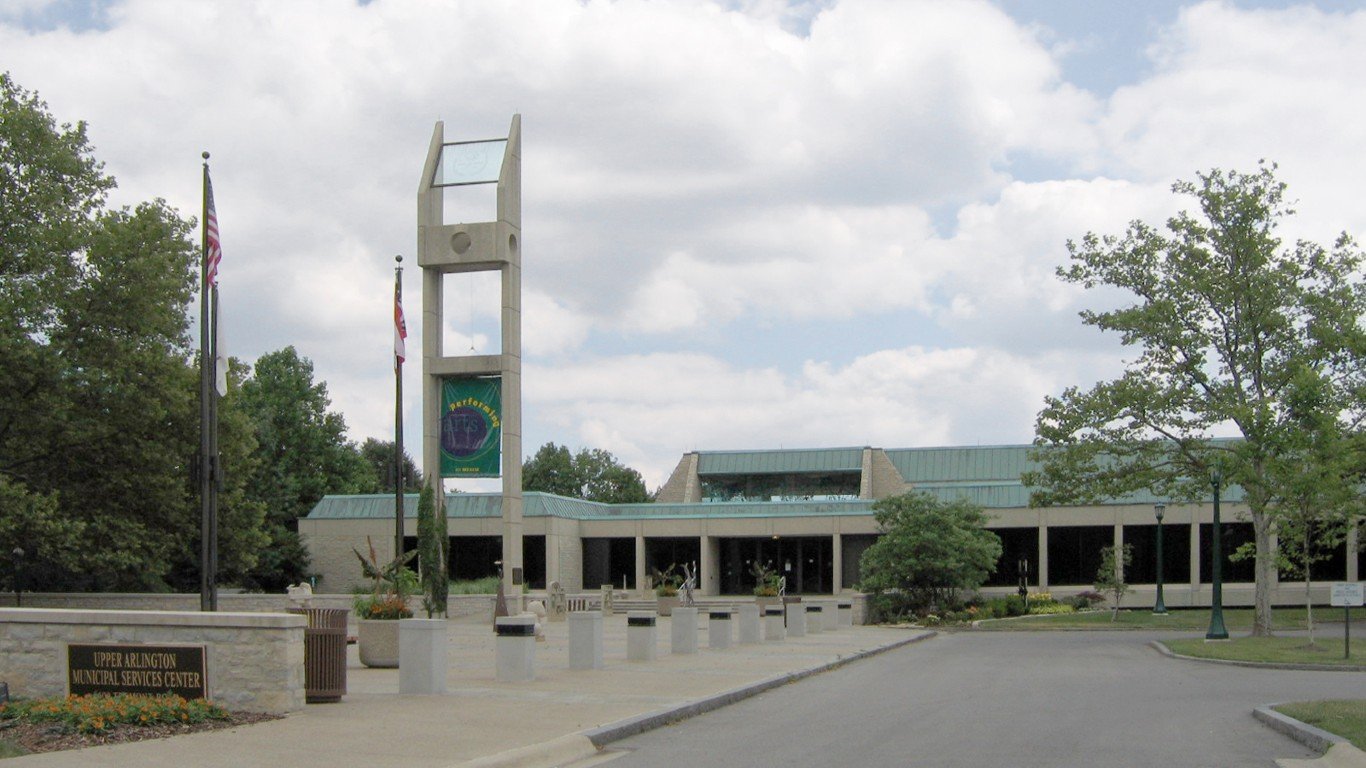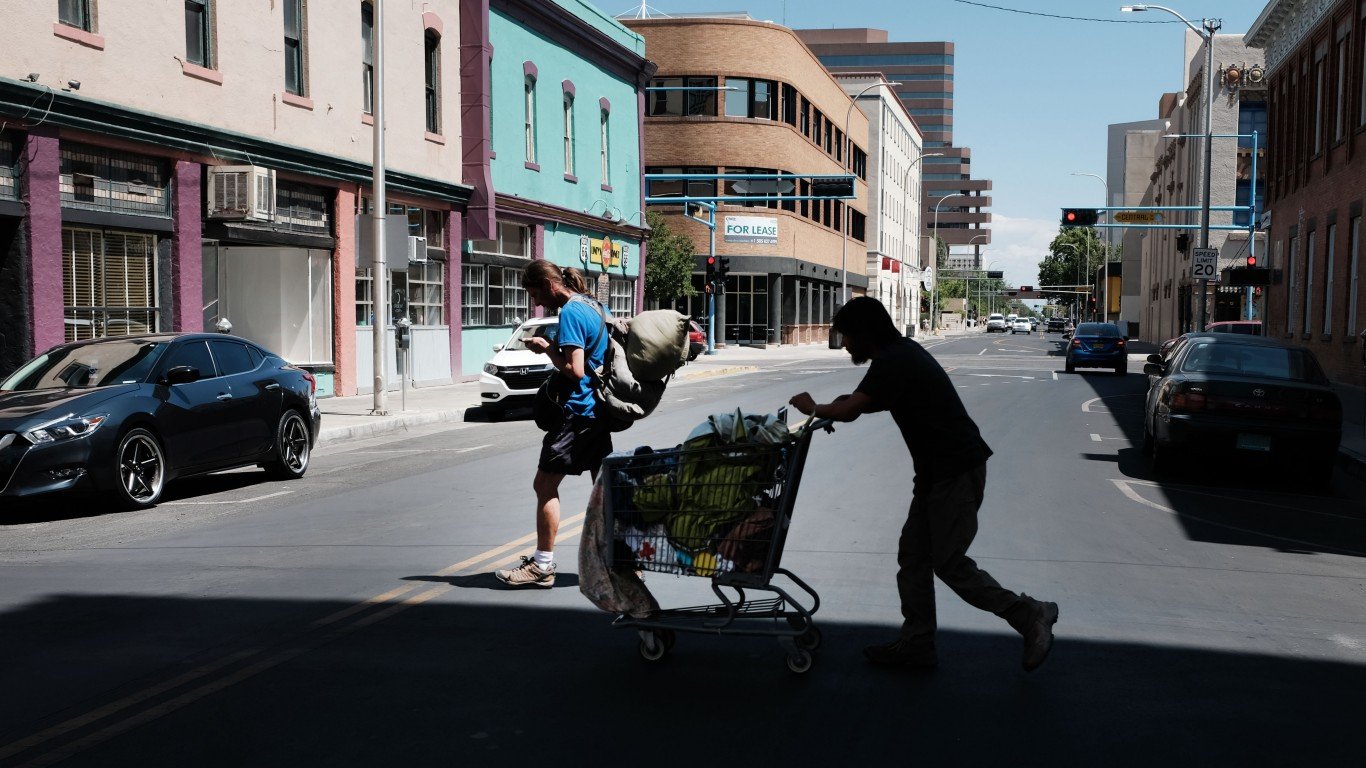

Inflation has driven up the prices of nearly all goods and services, including necessary items such as groceries. The cost of a carton of eggs was 32% higher in May compared to a year ago. According to a report by Moody’s Analytics, American families pay $311 more each month, on average, for essential goods compared to one year ago. To survive the price hikes, millions of Americans may have to rely on the government’s food assistance benefits, the Supplemental Nutrition Assistance Program.
As of 2020, roughly 13.8 million American households, about one in 10, received SNAP benefits, formerly known as food stamps. At the more local level, there are relatively affluent communities where SNAP recipiency rates are much lower.
To rank the 50 cities with the lowest SNAP recipiency rates, 24/7 Wall St. reviewed five-year estimates of the share of households that received SNAP benefits in the past 12 months from the U.S. Census Bureau’s 2020 American Community Survey. We defined cities based on a population threshold — places with at least 25,000 in population.
As of 2020, 11.4% of U.S. households received SNAP benefits. Among the 50 places on this list, that share ranges from 2.2% to as low as 0.9%. California has by far the most cities with the lowest SNAP recipiency, with 14.
While factors such as assets and household composition impact whether a household qualifies for the benefit, SNAP recipiency is primarily determined by income. So, as might be expected, cities with higher incomes tend to have relatively few households receiving SNAP benefits. The national median household income is $64,994. Out of the 50 cities on this list, all but one have higher median household incomes. In Lexington, Massachusetts, which has a SNAP recipiency rate of 2.0%, the typical household has an income of $185,686. These are the states where the most children live in Poverty.
Because income is the primary determinant for SNAP recipiency, unemployment is a major determinant in how many people receive benefits, as those Americans who are out of a job are likely to have little to no income. Nearly all of the cities on this list have five-year average unemployment rates lower than the U.S. five-year average unemployment rate of 5.3%. Vestavia Hills, Alabama, which has a SNAP recipiency rate of 1.8%, has a five-year unemployment rate of 1.7%. These are the states with the worst spikes in unemployment since the pandemic began.
Click here to see cities with the lowest SNAP recipiency rates
To determine the cities with the lowest SNAP recipiency rates, 24/7 Wall St. reviewed five-year estimates of the share of households that received SNAP benefits in the past 12 months from the U.S. Census Bureau’s 2020 American Community Survey.
We used census “place” geographies — a category that includes incorporated legal entities and census-designated statistical entities. We defined cities based on a population threshold — census places needed to have a population of at least 25,000 to be considered.
Cities were excluded if the SNAP recipiency rate was not available in the 2020 ACS, if there were fewer than 500 households, or if the sampling error associated with a city’s data was deemed too high.
The sampling error was defined as too high if the coefficient of variation — a statistical assessment of how reliable an estimate is — for a city’s SNAP recipiency rate was above 15% and greater than two standard deviations above the mean CV for all cities’ SNAP recipiency rates. We similarly excluded cities that had a sampling error too high for their population, using the same definition.
Cities were ranked based on the share of households that received SNAP benefits in the past 12 months as of 2020. To break ties, we used the number of households that received SNAP benefits in the past 12 months.
Additional information on poverty rate, median household income, and unemployment rate are also five-year estimates from the 2020 ACS.
50. Severna Park, Maryland
> Households receiving SNAP benefits: 2.2%
> Poverty rate: 2.3% — 6th lowest of 1,703 cities
> Median household income: $151,969 — 16th highest of 1,703 cities
> Unemployment rate: 3.0% — 111th lowest of 1,703 cities
[in-text-ad]

49. Bethesda, Maryland
> Households receiving SNAP benefits: 2.2%
> Poverty rate: 3.6% — 59th lowest of 1,703 cities
> Median household income: $172,873 — 6th highest of 1,703 cities
> Unemployment rate: 3.4% — 212th lowest of 1,703 cities

48. Yorba Linda, California
> Households receiving SNAP benefits: 2.1%
> Poverty rate: 4.6% — 130th lowest of 1,703 cities
> Median household income: $133,088 — 38th highest of 1,703 cities
> Unemployment rate: 3.8% — 358th lowest of 1,703 cities

47. Edina, Minnesota
> Households receiving SNAP benefits: 2.1%
> Poverty rate: 4.7% — 133rd lowest of 1,703 cities
> Median household income: $108,576 — 150th highest of 1,703 cities
> Unemployment rate: 3.2% — 169th lowest of 1,703 cities
[in-text-ad-2]
46. Queen Creek, Arizona
> Households receiving SNAP benefits: 2.1%
> Poverty rate: 5.2% — 184th lowest of 1,703 cities
> Median household income: $104,161 — 180th highest of 1,703 cities
> Unemployment rate: 6.6% — 436th highest of 1,703 cities
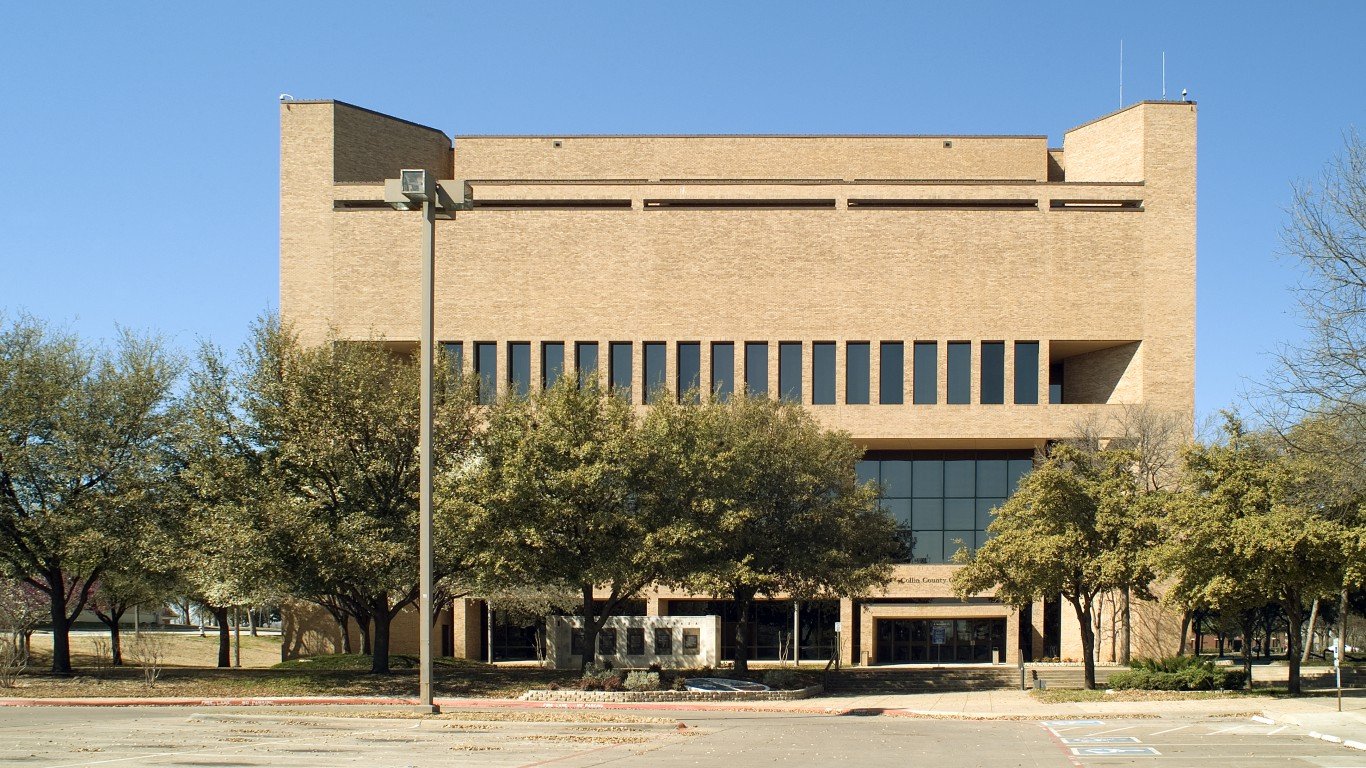
45. McKinney, Texas
> Households receiving SNAP benefits: 2.1%
> Poverty rate: 6.9% — 377th lowest of 1,703 cities
> Median household income: $100,775 — 226th highest of 1,703 cities
> Unemployment rate: 3.5% — 232nd lowest of 1,703 cities
[in-text-ad]

44. Menlo Park, California
> Households receiving SNAP benefits: 2.1%
> Poverty rate: 5.6% — 232nd lowest of 1,703 cities
> Median household income: $167,567 — 8th highest of 1,703 cities
> Unemployment rate: 3.7% — 310th lowest of 1,703 cities

43. Walnut Creek, California
> Households receiving SNAP benefits: 2.0%
> Poverty rate: 5.3% — 197th lowest of 1,703 cities
> Median household income: $108,689 — 149th highest of 1,703 cities
> Unemployment rate: 5.0% — 824th lowest of 1,703 cities

42. Arcadia, California
> Households receiving SNAP benefits: 2.0%
> Poverty rate: 8.8% — 572nd lowest of 1,703 cities
> Median household income: $95,736 — 279th highest of 1,703 cities
> Unemployment rate: 4.7% — 700th lowest of 1,703 cities
[in-text-ad-2]

41. Fleming Island, Florida
> Households receiving SNAP benefits: 2.0%
> Poverty rate: 3.3% — 38th lowest of 1,703 cities
> Median household income: $101,685 — 207th highest of 1,703 cities
> Unemployment rate: 6.1% — 572nd highest of 1,703 cities

40. The Woodlands, Texas
> Households receiving SNAP benefits: 2.0%
> Poverty rate: 3.5% — 52nd lowest of 1,703 cities
> Median household income: $126,087 — 57th highest of 1,703 cities
> Unemployment rate: 4.6% — 634th lowest of 1,703 cities
[in-text-ad]

39. Lexington, Massachusetts
> Households receiving SNAP benefits: 2.0%
> Poverty rate: 3.2% — 31st lowest of 1,703 cities
> Median household income: $185,686 — 3rd highest of 1,703 cities
> Unemployment rate: 3.5% — 239th lowest of 1,703 cities
38. Tysons, Virginia
> Households receiving SNAP benefits: 2.0%
> Poverty rate: 6.1% — 280th lowest of 1,703 cities
> Median household income: $109,050 — 145th highest of 1,703 cities
> Unemployment rate: 5.6% — 711th highest of 1,703 cities

37. Catalina Foothills, Arizona
> Households receiving SNAP benefits: 1.9%
> Poverty rate: 4.8% — 144th lowest of 1,703 cities
> Median household income: $95,589 — 282nd highest of 1,703 cities
> Unemployment rate: 4.9% — 766th lowest of 1,703 cities
[in-text-ad-2]
36. Keller, Texas
> Households receiving SNAP benefits: 1.9%
> Poverty rate: 3.2% — 32nd lowest of 1,703 cities
> Median household income: $149,342 — 19th highest of 1,703 cities
> Unemployment rate: 3.3% — 187th lowest of 1,703 cities

35. Wilmette, Illinois
> Households receiving SNAP benefits: 1.9%
> Poverty rate: 3.3% — 36th lowest of 1,703 cities
> Median household income: $161,765 — 10th highest of 1,703 cities
> Unemployment rate: 4.0% — 394th lowest of 1,703 cities
[in-text-ad]

34. Ken Caryl, Colorado
> Households receiving SNAP benefits: 1.9%
> Poverty rate: 4.2% — 99th lowest of 1,703 cities
> Median household income: $97,344 — 259th highest of 1,703 cities
> Unemployment rate: 3.3% — 186th lowest of 1,703 cities
33. Park Ridge, Illinois
> Households receiving SNAP benefits: 1.8%
> Poverty rate: 3.9% — 71st lowest of 1,703 cities
> Median household income: $113,809 — 109th highest of 1,703 cities
> Unemployment rate: 3.2% — 153rd lowest of 1,703 cities
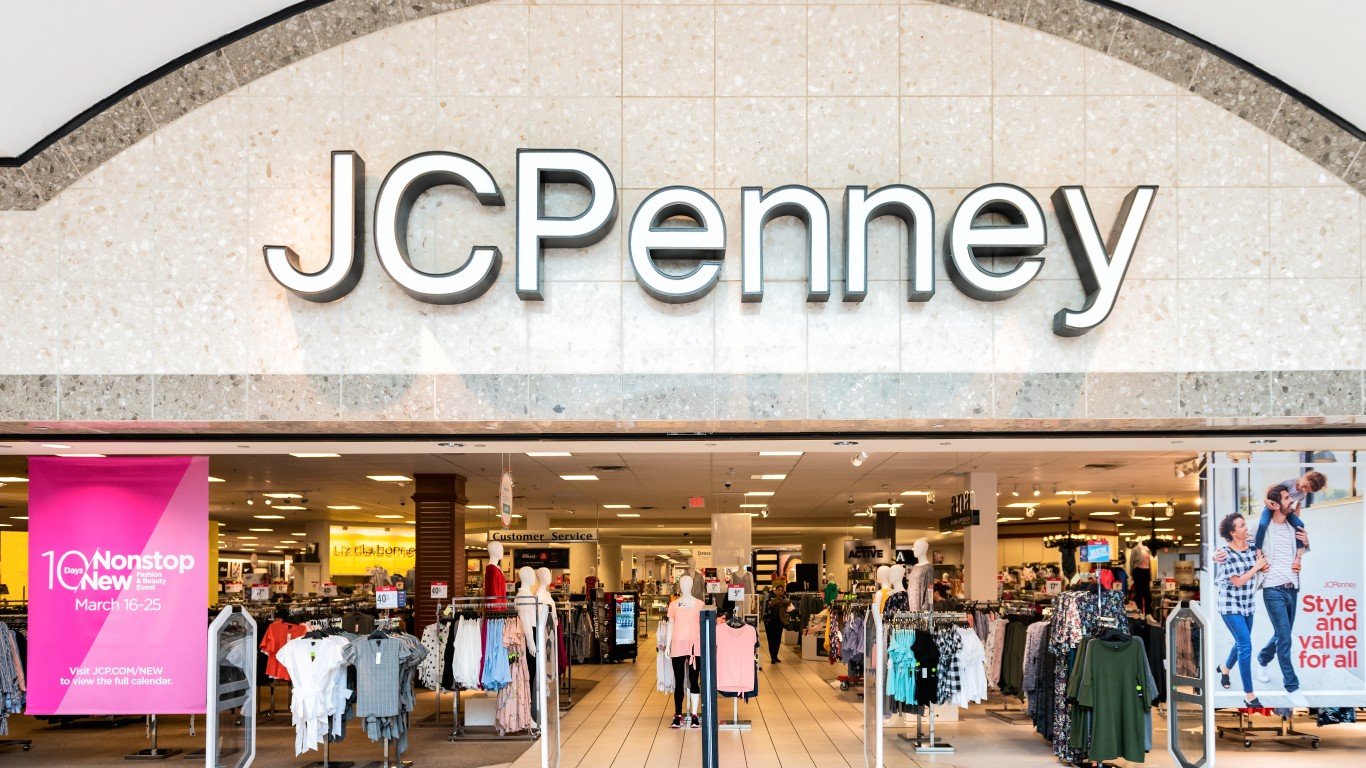
32. Fair Oaks, Virginia
> Households receiving SNAP benefits: 1.8%
> Poverty rate: 5.4% — 206th lowest of 1,703 cities
> Median household income: $112,281 — 124th highest of 1,703 cities
> Unemployment rate: 3.5% — 258th lowest of 1,703 cities
[in-text-ad-2]
31. Oakville, Missouri
> Households receiving SNAP benefits: 1.8%
> Poverty rate: 5.7% — 240th lowest of 1,703 cities
> Median household income: $86,505 — 392nd highest of 1,703 cities
> Unemployment rate: 2.4% — 37th lowest of 1,703 cities
30. New Lenox, Illinois
> Households receiving SNAP benefits: 1.8%
> Poverty rate: 2.4% — 8th lowest of 1,703 cities
> Median household income: $115,327 — 101st highest of 1,703 cities
> Unemployment rate: 3.5% — 235th lowest of 1,703 cities
[in-text-ad]
29. Vestavia Hills, Alabama
> Households receiving SNAP benefits: 1.8%
> Poverty rate: 4.3% — 104th lowest of 1,703 cities
> Median household income: $110,478 — 136th highest of 1,703 cities
> Unemployment rate: 1.7% — 8th lowest of 1,703 cities

28. South Jordan, Utah
> Households receiving SNAP benefits: 1.8%
> Poverty rate: 2.9% — 16th lowest of 1,703 cities
> Median household income: $106,824 — 164th highest of 1,703 cities
> Unemployment rate: 1.9% — 12th lowest of 1,703 cities

27. Pleasanton, California
> Households receiving SNAP benefits: 1.8%
> Poverty rate: 5.2% — 188th lowest of 1,703 cities
> Median household income: $160,689 — 11th highest of 1,703 cities
> Unemployment rate: 3.5% — 247th lowest of 1,703 cities
[in-text-ad-2]
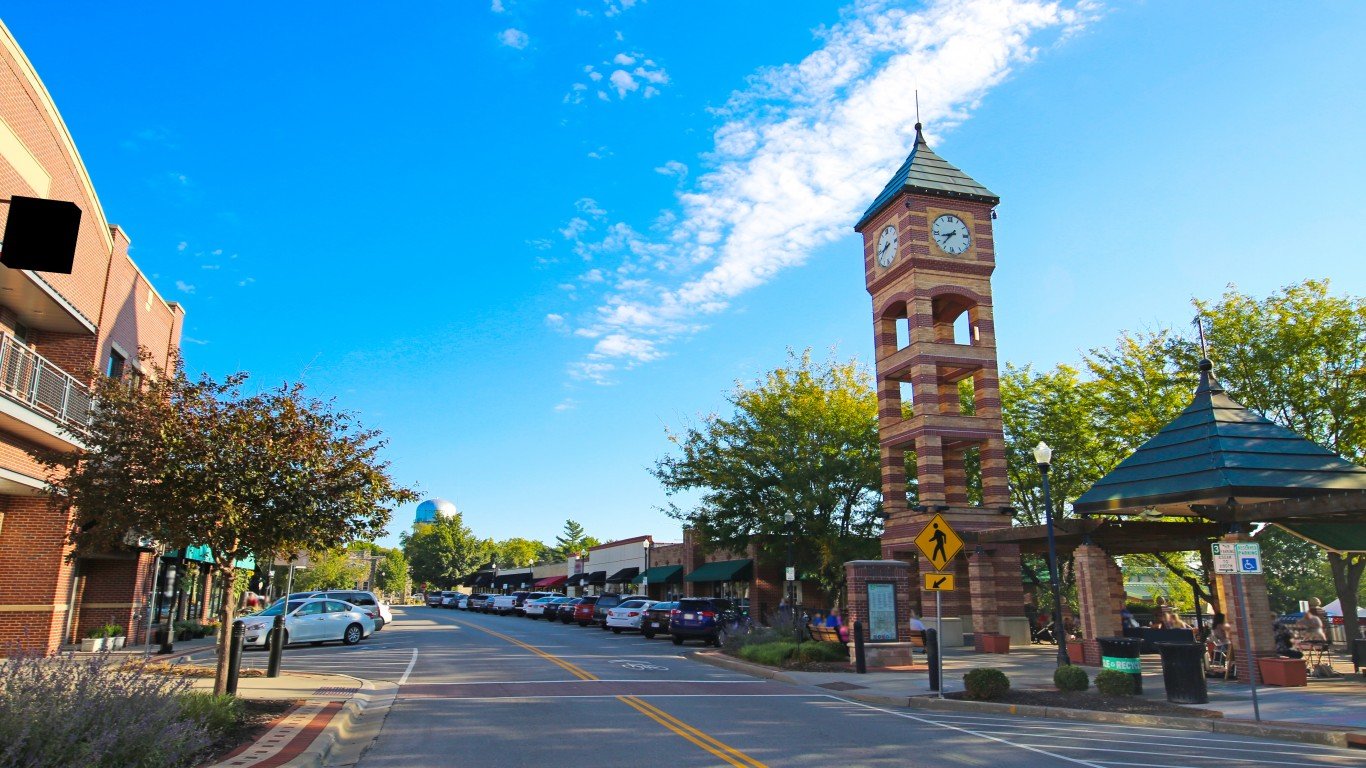
26. Overland Park, Kansas
> Households receiving SNAP benefits: 1.8%
> Poverty rate: 4.3% — 108th lowest of 1,703 cities
> Median household income: $87,629 — 379th highest of 1,703 cities
> Unemployment rate: 3.2% — 146th lowest of 1,703 cities
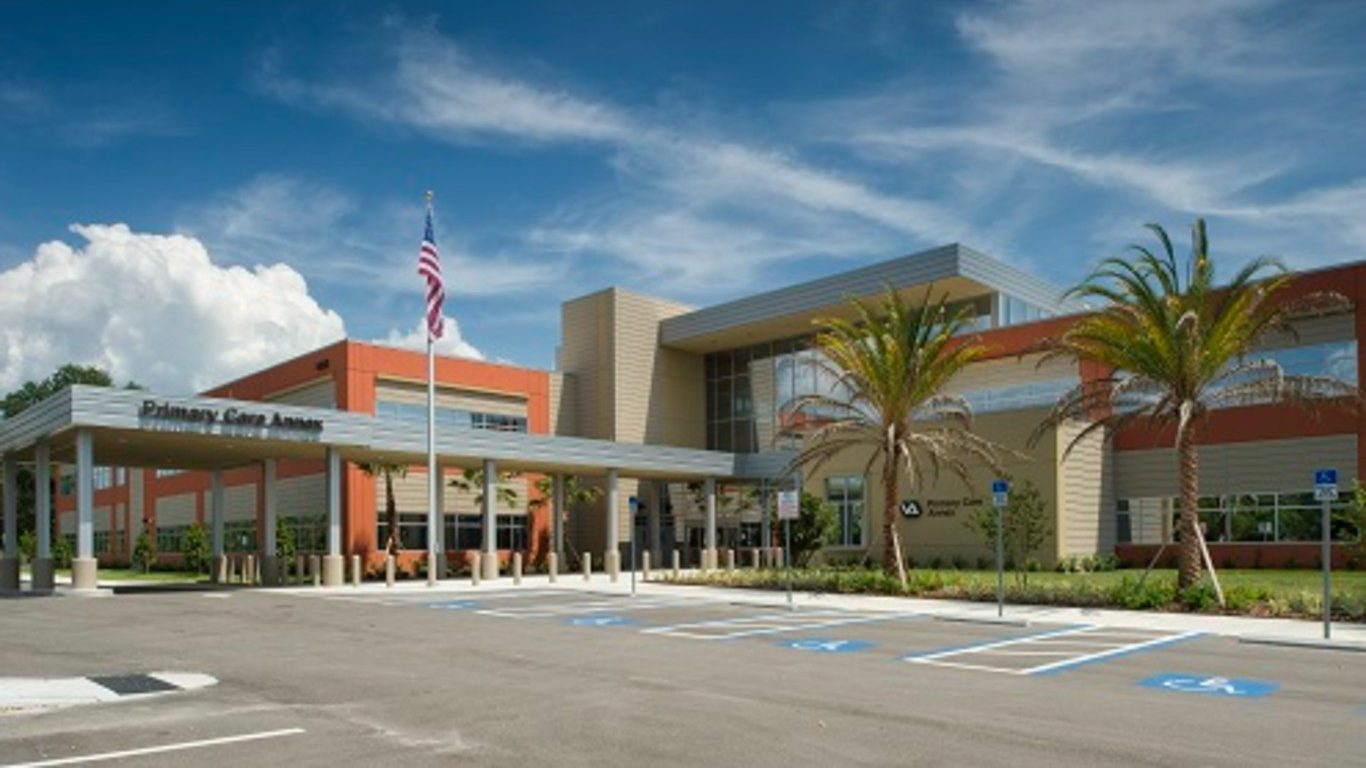
25. Keystone, Florida
> Households receiving SNAP benefits: 1.8%
> Poverty rate: 3.2% — 33rd lowest of 1,703 cities
> Median household income: $126,573 — 55th highest of 1,703 cities
> Unemployment rate: 3.8% — 338th lowest of 1,703 cities
[in-text-ad]

24. Dublin, California
> Households receiving SNAP benefits: 1.7%
> Poverty rate: 3.6% — 55th lowest of 1,703 cities
> Median household income: $152,745 — 15th highest of 1,703 cities
> Unemployment rate: 3.6% — 281st lowest of 1,703 cities
23. Reading, Massachusetts
> Households receiving SNAP benefits: 1.7%
> Poverty rate: 3.0% — 24th lowest of 1,703 cities
> Median household income: $131,515 — 45th highest of 1,703 cities
> Unemployment rate: 2.7% — 66th lowest of 1,703 cities

22. El Dorado Hills, California
> Households receiving SNAP benefits: 1.7%
> Poverty rate: 4.1% — 92nd lowest of 1,703 cities
> Median household income: $132,130 — 42nd highest of 1,703 cities
> Unemployment rate: 3.2% — 150th lowest of 1,703 cities
[in-text-ad-2]
21. South Riding, Virginia
> Households receiving SNAP benefits: 1.7%
> Poverty rate: 3.8% — 66th lowest of 1,703 cities
> Median household income: $168,738 — 7th highest of 1,703 cities
> Unemployment rate: 4.2% — 491st lowest of 1,703 cities

20. San Ramon, California
> Households receiving SNAP benefits: 1.6%
> Poverty rate: 3.9% — 69th lowest of 1,703 cities
> Median household income: $167,345 — 9th highest of 1,703 cities
> Unemployment rate: 4.3% — 536th lowest of 1,703 cities
[in-text-ad]

19. Centennial, Colorado
> Households receiving SNAP benefits: 1.6%
> Poverty rate: 3.0% — 21st lowest of 1,703 cities
> Median household income: $109,767 — 142nd highest of 1,703 cities
> Unemployment rate: 3.6% — 260th lowest of 1,703 cities
18. Apex, North Carolina
> Households receiving SNAP benefits: 1.6%
> Poverty rate: 3.6% — 57th lowest of 1,703 cities
> Median household income: $112,549 — 122nd highest of 1,703 cities
> Unemployment rate: 4.5% — 603rd lowest of 1,703 cities
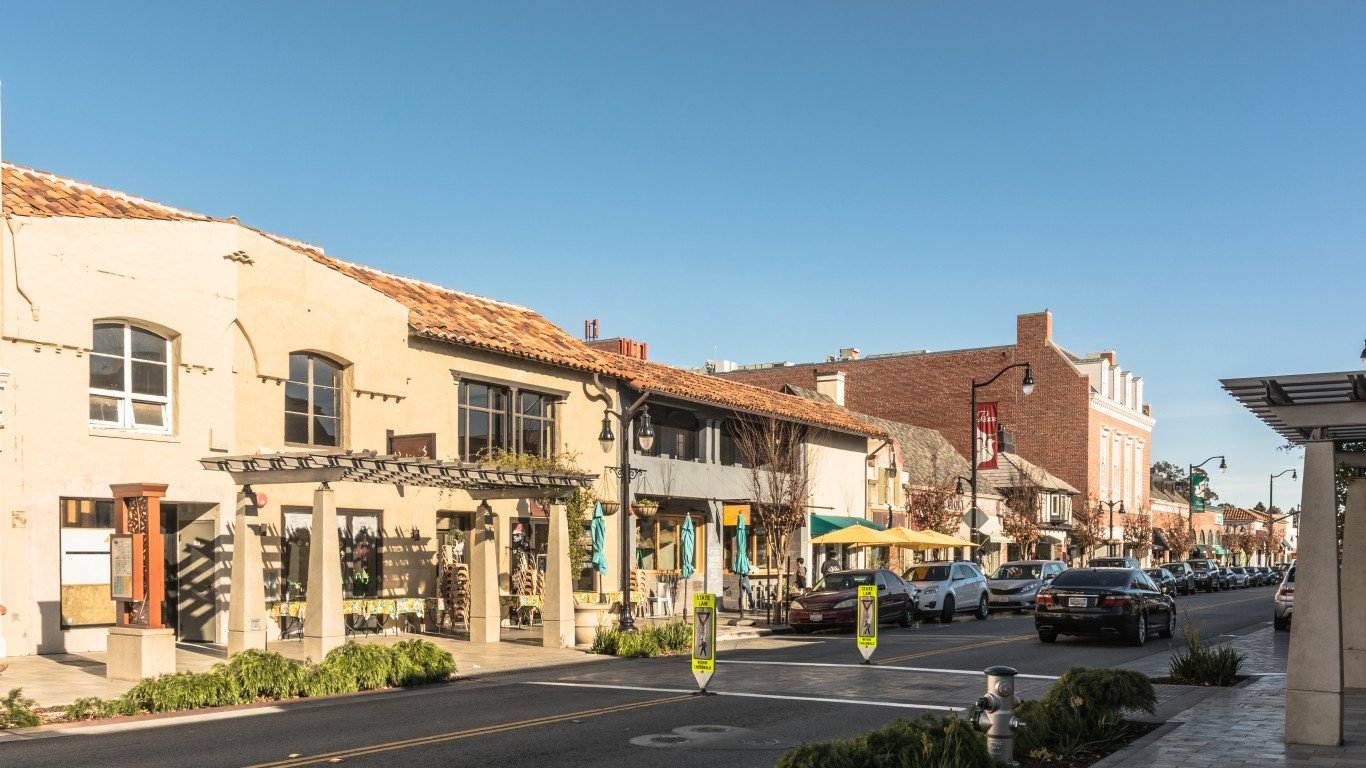
17. Burlingame, California
> Households receiving SNAP benefits: 1.6%
> Poverty rate: 3.9% — 75th lowest of 1,703 cities
> Median household income: $138,344 — 32nd highest of 1,703 cities
> Unemployment rate: 3.9% — 383rd lowest of 1,703 cities
[in-text-ad-2]

16. Rancho Santa Margarita, California
> Households receiving SNAP benefits: 1.5%
> Poverty rate: 5.0% — 166th lowest of 1,703 cities
> Median household income: $125,329 — 60th highest of 1,703 cities
> Unemployment rate: 3.2% — 160th lowest of 1,703 cities
15. Maple Grove, Minnesota
> Households receiving SNAP benefits: 1.5%
> Poverty rate: 3.5% — 51st lowest of 1,703 cities
> Median household income: $113,793 — 110th highest of 1,703 cities
> Unemployment rate: 2.7% — 67th lowest of 1,703 cities
[in-text-ad]
14. Riverton, Utah
> Households receiving SNAP benefits: 1.5%
> Poverty rate: 4.3% — 114th lowest of 1,703 cities
> Median household income: $101,810 — 203rd highest of 1,703 cities
> Unemployment rate: 3.2% — 148th lowest of 1,703 cities

13. Redondo Beach, California
> Households receiving SNAP benefits: 1.5%
> Poverty rate: 4.0% — 86th lowest of 1,703 cities
> Median household income: $116,832 — 94th highest of 1,703 cities
> Unemployment rate: 3.5% — 255th lowest of 1,703 cities
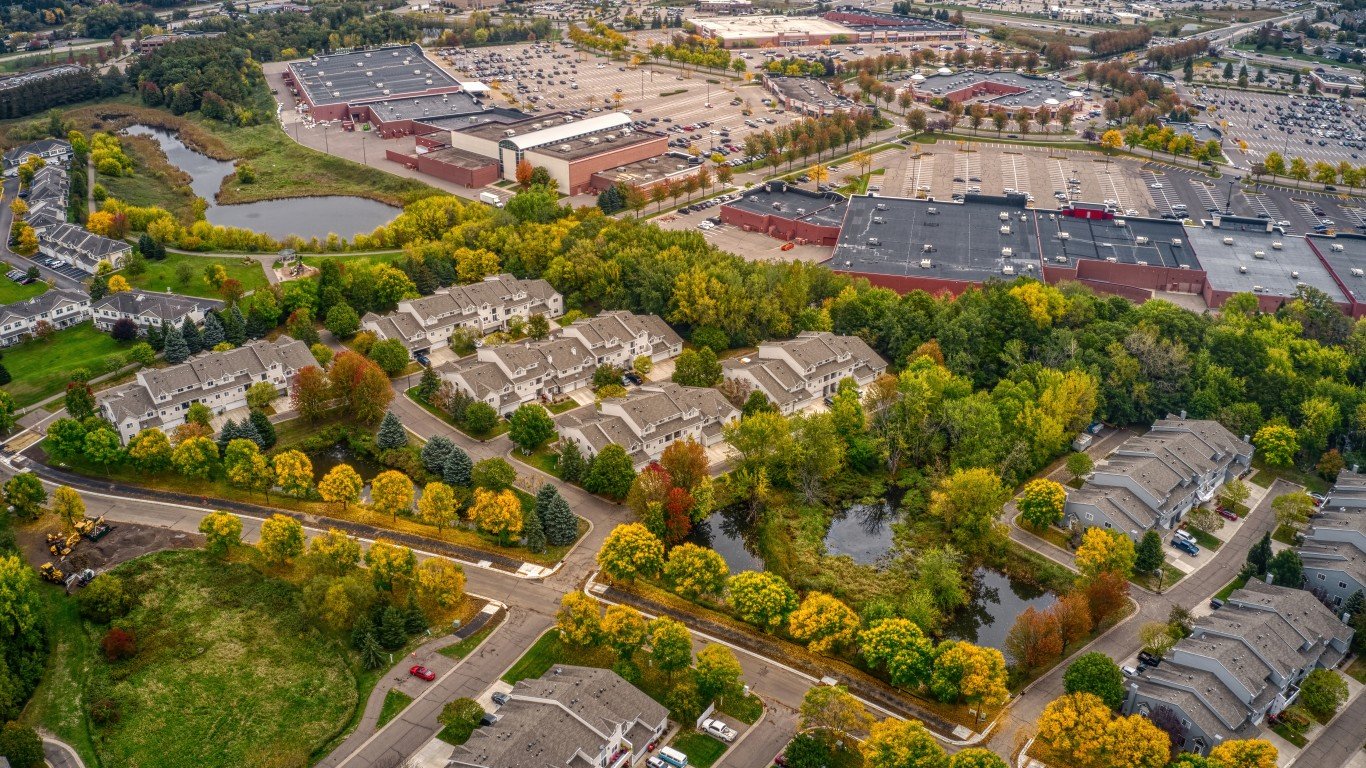
12. Woodbury, Minnesota
> Households receiving SNAP benefits: 1.4%
> Poverty rate: 4.2% — 102nd lowest of 1,703 cities
> Median household income: $108,055 — 157th highest of 1,703 cities
> Unemployment rate: 3.2% — 163rd lowest of 1,703 cities
[in-text-ad-2]
11. Mount Pleasant, South Carolina
> Households receiving SNAP benefits: 1.4%
> Poverty rate: 5.1% — 178th lowest of 1,703 cities
> Median household income: $104,772 — 177th highest of 1,703 cities
> Unemployment rate: 2.1% — 16th lowest of 1,703 cities

10. Fruit Cove, Florida
> Households receiving SNAP benefits: 1.4%
> Poverty rate: 2.6% — 11th lowest of 1,703 cities
> Median household income: $108,948 — 147th highest of 1,703 cities
> Unemployment rate: 3.6% — 259th lowest of 1,703 cities
[in-text-ad]
9. Ballwin, Missouri
> Households receiving SNAP benefits: 1.4%
> Poverty rate: 4.0% — 81st lowest of 1,703 cities
> Median household income: $97,174 — 264th highest of 1,703 cities
> Unemployment rate: 3.3% — 193rd lowest of 1,703 cities

8. Newport Beach, California
> Households receiving SNAP benefits: 1.3%
> Poverty rate: 6.9% — 368th lowest of 1,703 cities
> Median household income: $133,849 — 37th highest of 1,703 cities
> Unemployment rate: 2.9% — 95th lowest of 1,703 cities
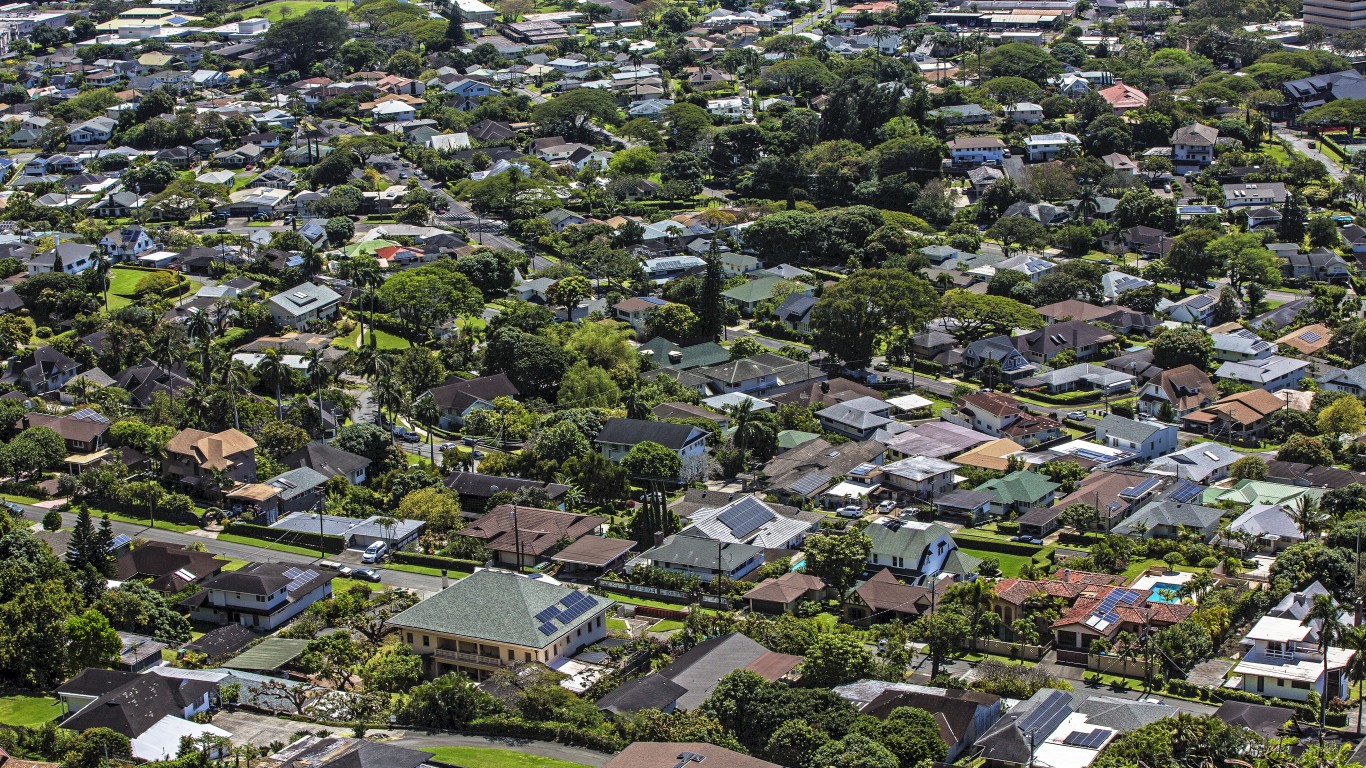
7. East Honolulu, Hawaii
> Households receiving SNAP benefits: 1.3%
> Poverty rate: 3.1% — 28th lowest of 1,703 cities
> Median household income: $139,487 — 30th highest of 1,703 cities
> Unemployment rate: 2.8% — 75th lowest of 1,703 cities
[in-text-ad-2]

6. Palo Alto, California
> Households receiving SNAP benefits: 1.3%
> Poverty rate: 5.5% — 223rd lowest of 1,703 cities
> Median household income: $174,003 — 5th highest of 1,703 cities
> Unemployment rate: 3.3% — 197th lowest of 1,703 cities
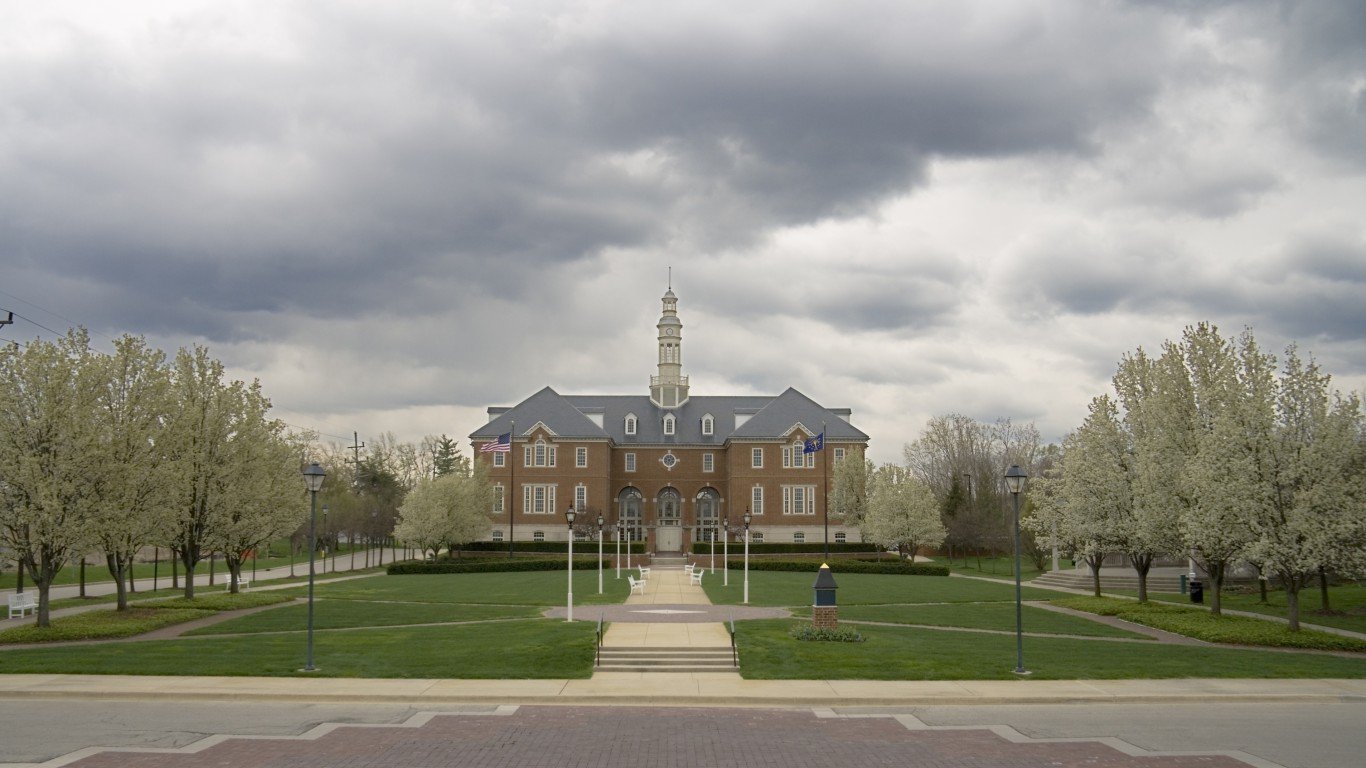
5. Carmel, Indiana
> Households receiving SNAP benefits: 1.2%
> Poverty rate: 3.1% — 27th lowest of 1,703 cities
> Median household income: $115,109 — 103rd highest of 1,703 cities
> Unemployment rate: 2.7% — 62nd lowest of 1,703 cities
[in-text-ad]

4. Pacifica, California
> Households receiving SNAP benefits: 1.2%
> Poverty rate: 4.3% — 113th lowest of 1,703 cities
> Median household income: $130,466 — 47th highest of 1,703 cities
> Unemployment rate: 3.5% — 233rd lowest of 1,703 cities
3. Upper Arlington, Ohio
> Households receiving SNAP benefits: 1.0%
> Poverty rate: 1.8% — 4th lowest of 1,703 cities
> Median household income: $124,688 — 61st highest of 1,703 cities
> Unemployment rate: 2.5% — 47th lowest of 1,703 cities

2. Highlands Ranch, Colorado
> Households receiving SNAP benefits: 1.0%
> Poverty rate: 2.6% — 10th lowest of 1,703 cities
> Median household income: $127,093 — 54th highest of 1,703 cities
> Unemployment rate: 3.6% — 272nd lowest of 1,703 cities
[in-text-ad-2]
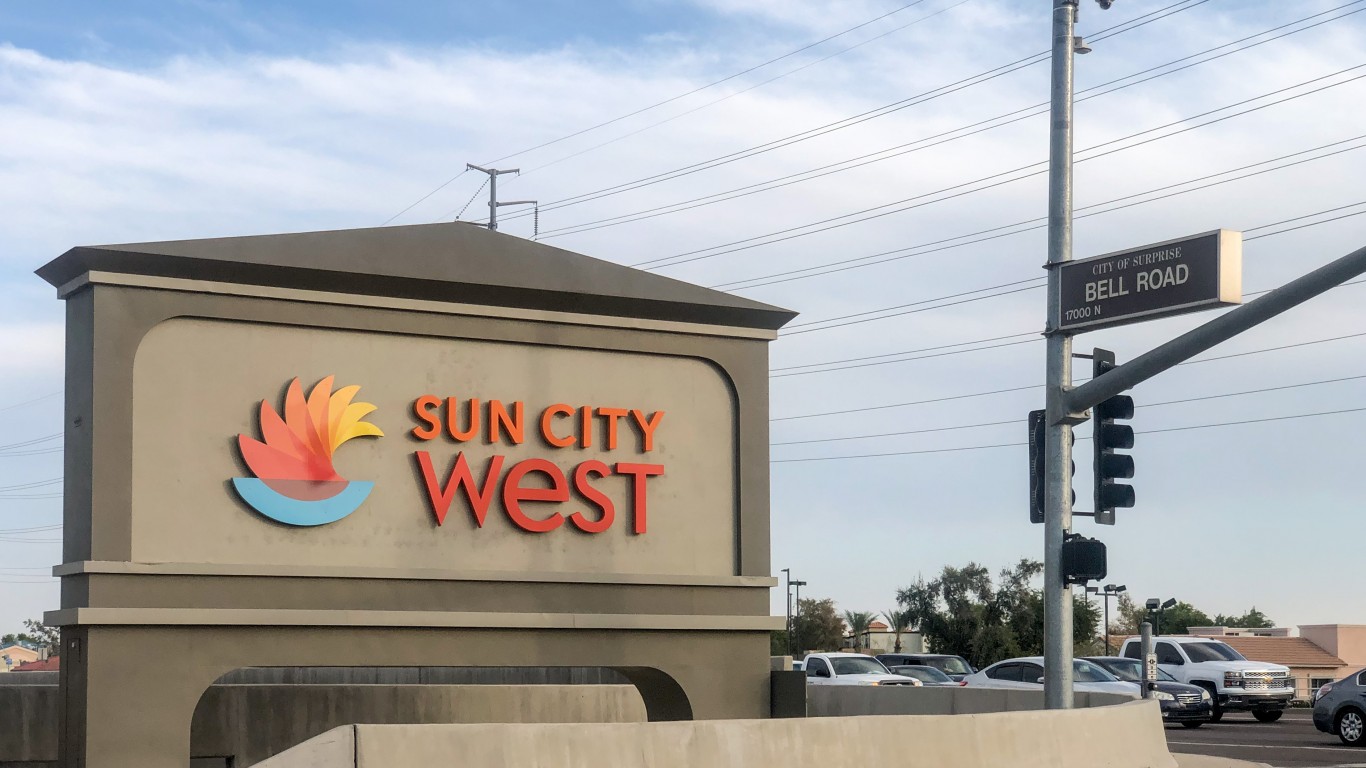
1. Sun City West, Arizona
> Households receiving SNAP benefits: 0.9%
> Poverty rate: 6.6% — 343rd lowest of 1,703 cities
> Median household income: $54,444 — 538th lowest of 1,703 cities
> Unemployment rate: 6.1% — 568th highest of 1,703 cities
Take This Retirement Quiz To Get Matched With An Advisor Now (Sponsored)
Are you ready for retirement? Planning for retirement can be overwhelming, that’s why it could be a good idea to speak to a fiduciary financial advisor about your goals today.
Start by taking this retirement quiz right here from SmartAsset that will match you with up to 3 financial advisors that serve your area and beyond in 5 minutes. Smart Asset is now matching over 50,000 people a month.
Click here now to get started.
Thank you for reading! Have some feedback for us?
Contact the 24/7 Wall St. editorial team.

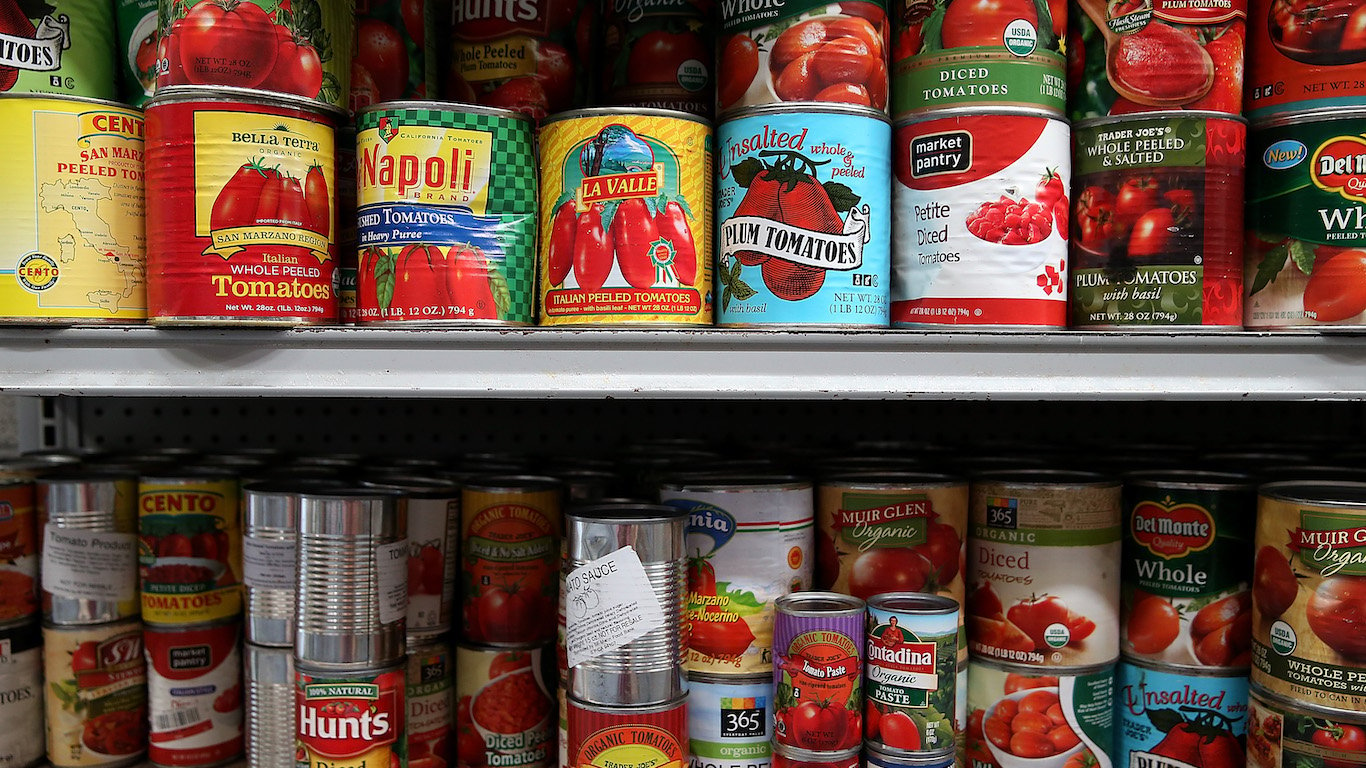 24/7 Wall St.
24/7 Wall St.
 24/7 Wall St.
24/7 Wall St.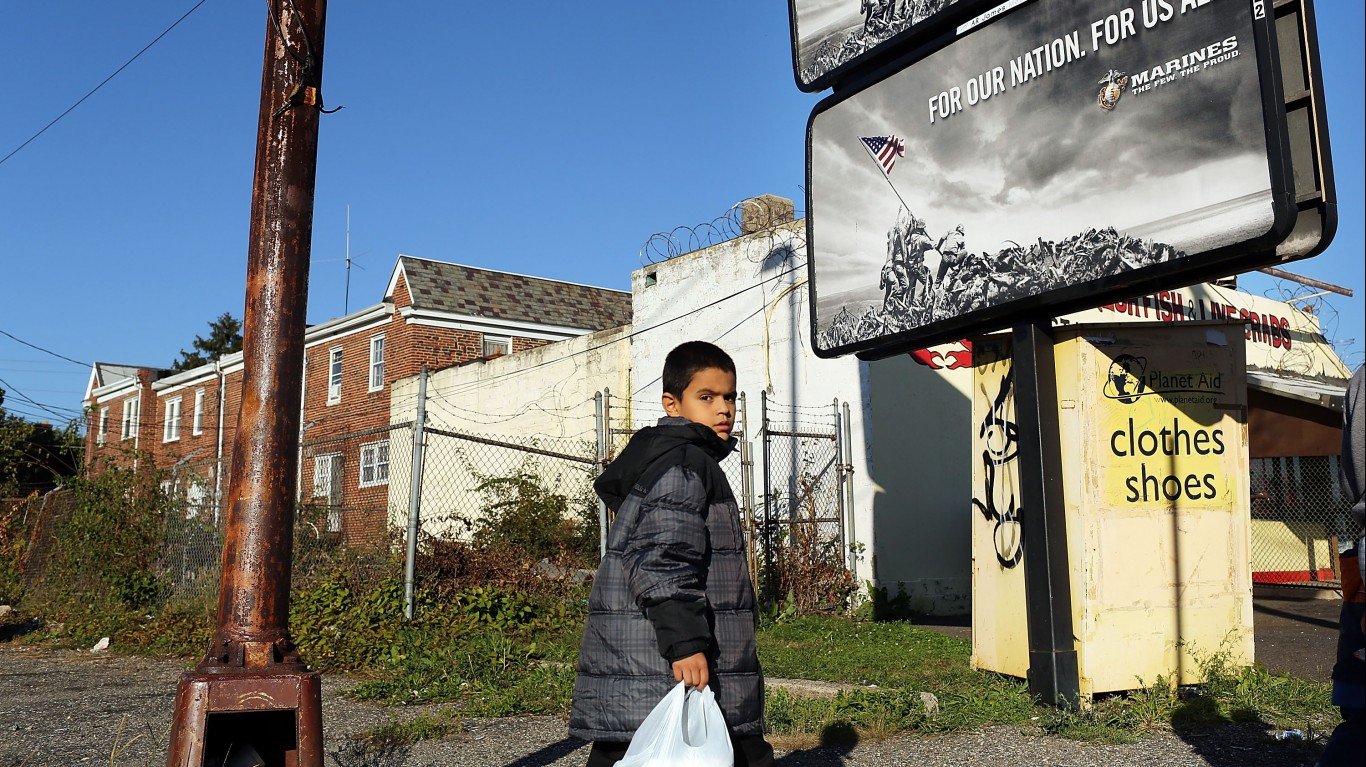 24/7 Wall St.
24/7 Wall St.
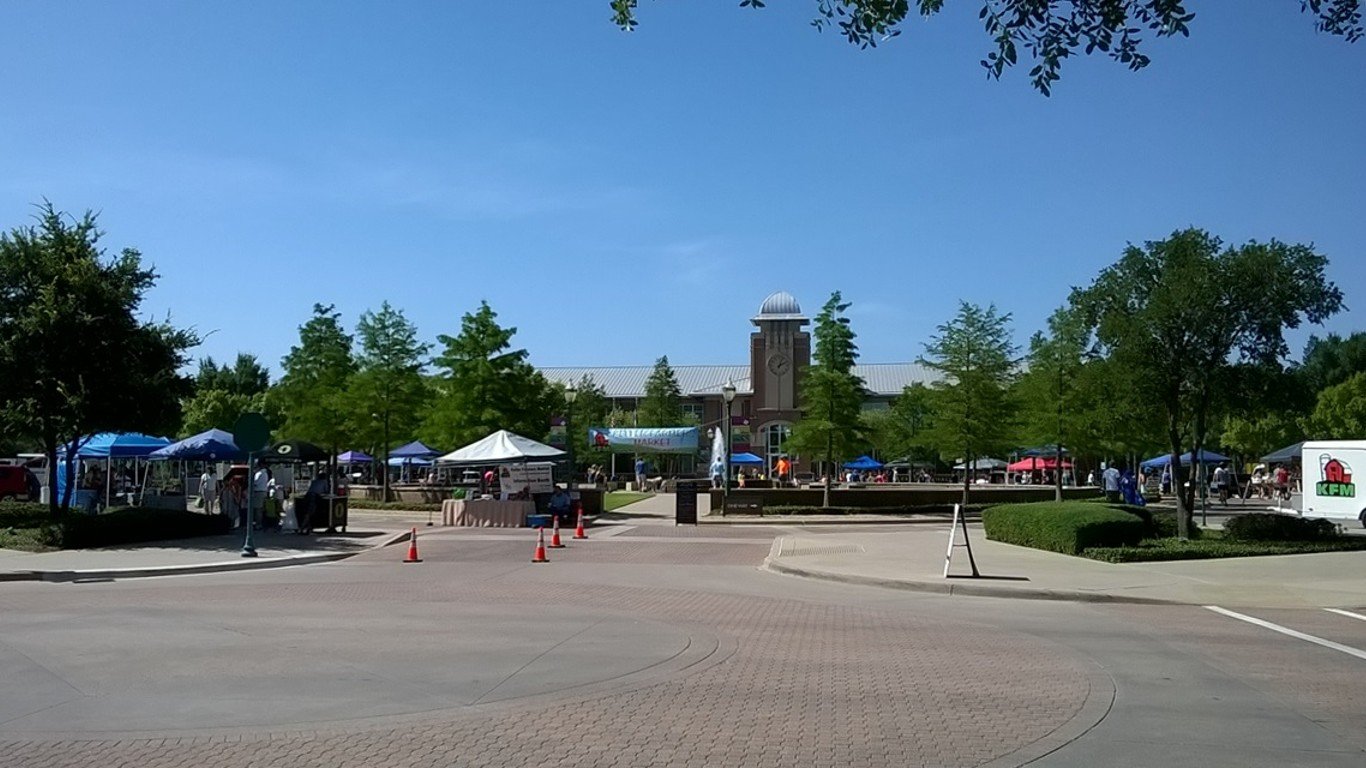
 24/7 Wall St.
24/7 Wall St.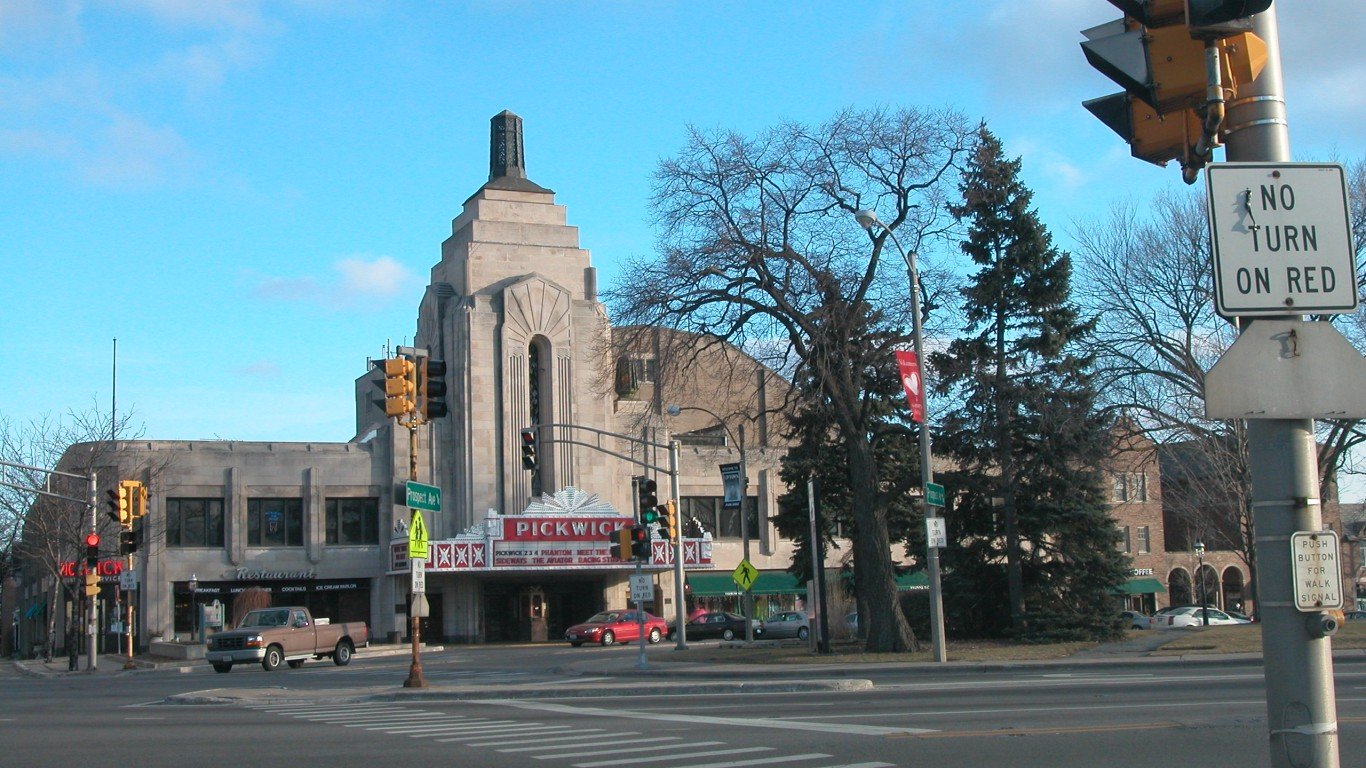

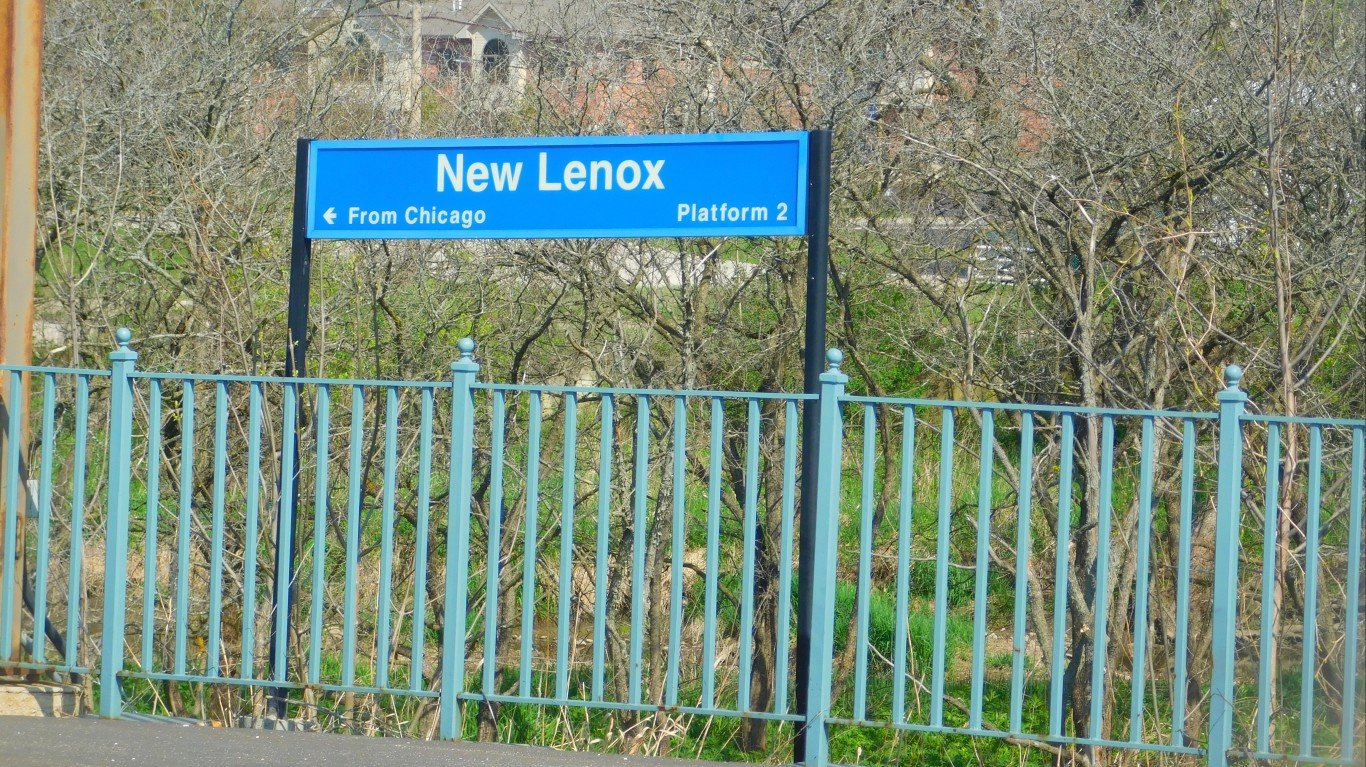

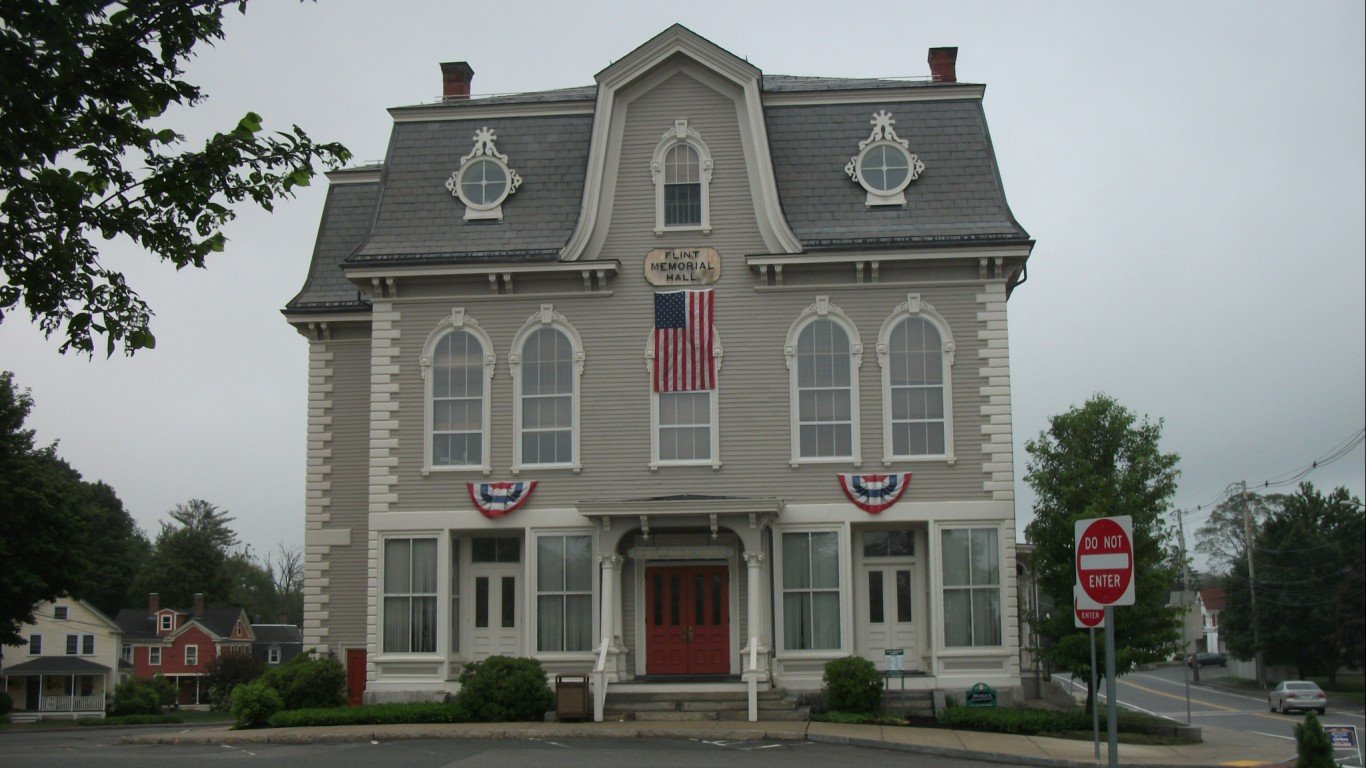

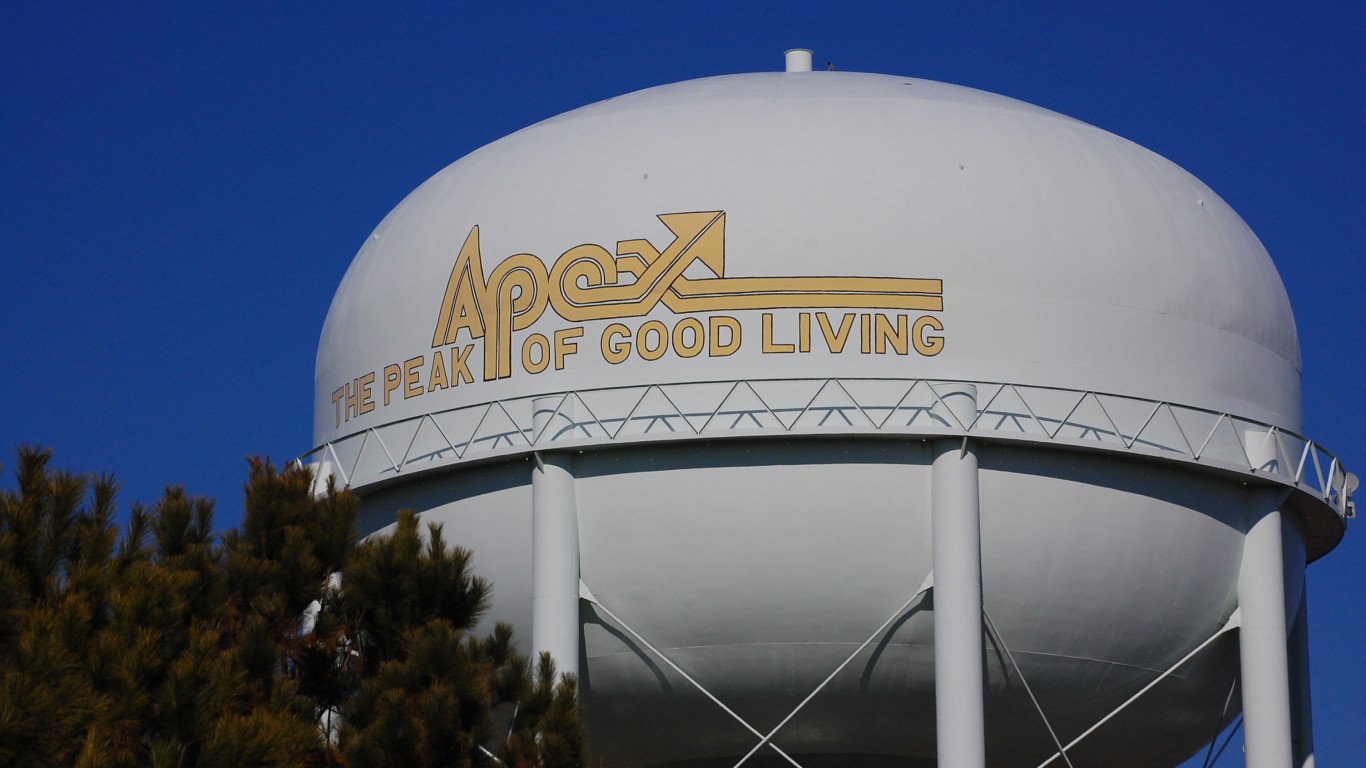
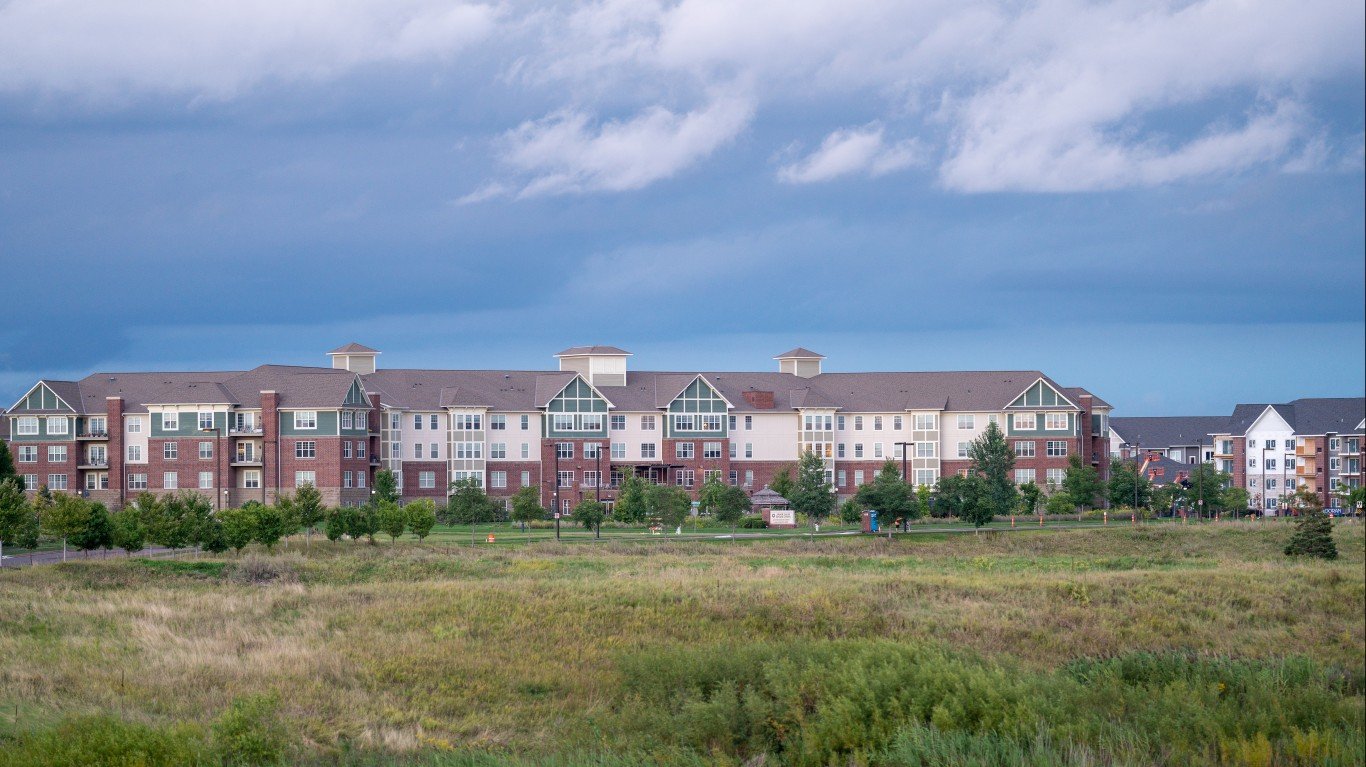



 24/7 Wall St.
24/7 Wall St.